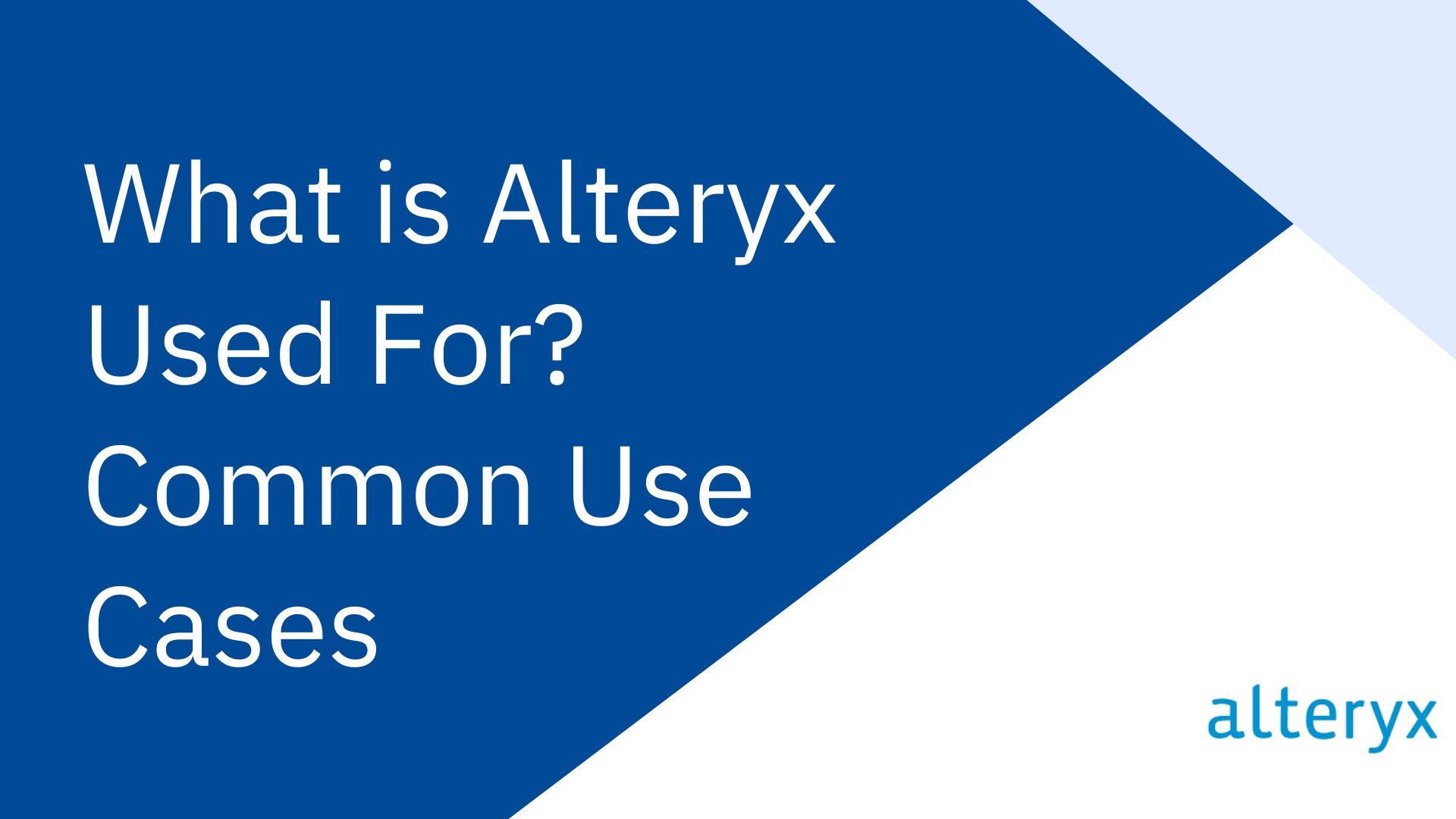What is Alteryx Used For? Common Use Cases
 Priya Sharma
Priya Sharma
There are various tools all around for different types of data related tasks. However, there is one that truly stands out from the rest and that is Alteryx. This one tool allows easy accessing, combining, cleaning, analyzing and testing of data. And all this in a much easier manner than its competitors like Microsoft Excel and SQL.
But what is Alteryx used for in the real world and what exactly is it? Well, there are many things to know about this tool to fully understand it. It is a powerful ETL (extract, transform, load) and data analytics tool. Teams and organizations as a whole benefit greatly from the incorporation of this tool. Let’s understand what some of its top use cases are.
An Introduction to Alteryx
Alteryx is known for being a popular and extremely powerful data visualization and analytics tool. It was designed with the purpose of simplifying advanced analytics automation to render it accessible to data professionals. It helps professionals prepare, analyze and blend data from multiple sources without any extensive coding knowledge.
Users can leverage its drag-and-drop interface to create complicated workflows. Data is integrated from a plethora of sources and cleaned and transformed prior to performing advanced level visualization and analytics. It automated the data analytics process, which reduced the manual efforts significantly.
What is Alteryx Used for?
Now that this blog has covered what this tool is, it’s time to understand the top uses of Alteryx. It is being used extensively in the real world by companies of all sizes. On a global level, this tool has gained extreme popularity in top organizations across various industries.
But why are companies adopting this tool at such a large scale? That is because this one tool is enough to automate all their data processes in an efficient and quick manner. Many complex business questions are answered fluently, which is all a company wants.
Let’s understand some of its most common uses. These implementations are among the most common ones among organizations.
- Data Analytics Automation
One of the biggest use cases of Alteryx is automation of data analytics. The processes of collecting, preparing, blending and cleaning the information from plenty of sources is automated. While its working is quite similar to an ETL or SQL tool, it has a more user-friendly approach. As opposed to Excel, it is more efficient.
Data can also be provided to build dashboards, charts or reports. This is generally via a visualization tool like MicroStrategy or Tableau.
- Automated Workflows
A lot of companies have certain processes or reports which need to recur on a regular basis. This tool enables organizations to create workflows that lead to automation of these processes. It allows users to pick either the pre-built workflows or even create their own.
There are plenty of different types of automated workflows. These include creation of reconciliations, audits, accounting closes, forecasts, etc.
- Geospatial Analysis
This tool was originally built as a Geographical Information System or GIS. Thus, it is brilliant at offering analysis about distance and locations. With this tool, companies can easily plot, map or geocode anything that has a location. This includes trucks, suppliers, competitors, customers and so on. This information is further utilized to calculate best routes, distances, drive times, etc.
- Data Preparation
Alteryx is a pro at automating processes of data collection, preparation, blending and cleansing from different sources. This all leads to connection of data sources that were otherwise pretty difficult or even impossible to connect. This further eliminates the need for manual entry or cases of double entry. Consequently saving a lot of time.
The data can directly be manipulated in Alteryx. Alternatively, it can also be connected to various other APIs, databases and files, including visualization tools
- Predictive Modeling
It enables predictive modeling that aids future outcomes of the project and sway the business decisions. This modeling is also usable in an exploratory environment and is even used in publishing the models into production. There are plenty of pre-built models, which can be used along with the customized models.
As a consequence, those who have little programming expertise can use it too. In fact, even coding experts adore this tool because it allows them to simplify different processes like data blending, preparation and access.
- Accessible Reporting
It is preferred by businesses throughout the globe because of its no-code and low-code options. Low-code is all the rage today and for all the right reasons. It helps users save hundreds of hours, which ultimately saves money for the businesses too.
Alteryx is simpler and much faster when compared to manual processes. It is extremely easy to use and learn, especially for those who have limited coding skills. No SQL knowledge is needed to get started.
Why is Alteryx Popular?
For a tool to be as popular as this one, there has to be plenty of reasons. In this case too, there are many reasons why it has gained such a high level of popularity. Let’s see the top reasons for the same.
Easy to Troubleshoot - It enables viewing and manipulating data during the process. This helps in understanding what’s happening prior to and after every single step in the workflow.
Advanced Analysis Capabilities - There are many tools within Alteryx for predictive, optimization, time series and spatial analysis. While it’s usually difficult to elevate analytical practice without deep R or Python knowledge, Alteryx course makes it all possible.
Beginner Friendly - Analysts who are more comfortable with tools like Excel often struggle to learn languages like Python. However, this one offers various drag and drop tools to ensure a slant learning curve.
Multiple System Connectivity - It integrates with various data sources like SQL databases, Amazon S3, APIs and spreadsheets. Hence, offering easy data analysis across various systems.
Wrap-Up
Alteryx is a widely popular and used tool for data analytics and visualization. The purpose with which it was created is to simplify all complex analytics automation. This would certainly increase its accessibility among data professionals. Today, it is being used to prepare, analyze and blend data from multiple sources and that too without much coding knowledge.
Subscribe to my newsletter
Read articles from Priya Sharma directly inside your inbox. Subscribe to the newsletter, and don't miss out.
Written by

Priya Sharma
Priya Sharma
I am a developer and writer. I am dedicated to providing engaging and informative content to help individuals and organizations stay ahead in the ever-evolving tech landscape. With a strong background in software development and a passion for teaching, I have the skills and experience to break down complex technical concepts and make them accessible to a wide audience. I strive to make sure that my readers leave my blog or course with a deeper understanding of the topics I cover. and I am always looking for new ways to share my knowledge and help others succeed in their tech-related endeavors.